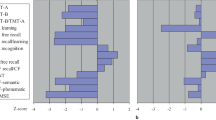Abstract
Borrelia burgdorferi (Bb) can cause a large number of neurological symptoms. Although extrapyramidal disturbances are rare (representing less than 2% of all neurological complications), diffuse choreic dyskinesias have been described during the course of mild encephalitis. The data published in the literature suggest that there are clinical and neurological analogies between neuroborreliosis and multiple sclerosis (MS). The presence of specific anti-Bb antibodies in cerebrospinal fluid is a discriminating factor that allows a diagnosis of neuroborreliosis to be made. We describe the case of a patient with Lyme disease, characterised by widespread chorea and behavioural disturbances. Emphasis is placed on the atypical onset and evolution, the difficulties encountered in formulating a diagnosis, and the uncertainties concerning the pathophysiology and clinical/neuroradiological correlations of the disease.
Sommario
La “Borrelia burgdorferi” (Bb) può causare numerosi sintomi neurologici. Benché i disturbi extrapiramidali siano rari, meno del 2% di tutte le complicanze neurologiche, sono descritte discinesie coreiche diffuse in corso di lievi encefaliti. I dati della letteratura suggeriscono analogie cliniche e neuroradiologiche tra neuroborreliosi e sclerosi multipla (SM); il riscontro di anticorpi specifici per la Bb nel liquor discrimina le due entità patologiche e consente la diagnosi di neuroborreliosi. Descriviamo un caso di malattia di Lyme, caratterizzato da corea diffusa e disturbi comportamentali. Si sottolineano l’esordio e l’evoluzione atipici, la difficoltà dell’iter diagnostico, le incertezze sulla fisiopatologia e sulle correlazioni clinico-neuroradiologiche.
Similar content being viewed by others
References
Halperin JJ, Golightly M, The Long Island Neuroborreliosis Collaborative Study Group (1992) Lyme borreliosis in Bell’s palsy. Neurology 42:1268–1270
Halperin JJ, Krupp LB, Golightly MG et al (1990) Lyme borreliosis-associated encephalopathy. Neurology 40:1340–1343
Halperin JJ, Luft BJ, Anand AK et al (1989) Lyme borreliosis: Central nervous system manifestations. Neurology 39:753–759
Krüger H, Reuss K, Pulz M et al (1989) Meningoradiculitis and encephalomyelitis due toBorrelia burgdorferi: A followup study of 72 patients over 27 years. J Neurol 236:322–328
Logigian EL, Kaplann RF, Steere AC (1990) Chronic neurologic manifestations of Lyme disease. N Engl J Med 323:1438–1444
Kaplan RF, Meadows ME, Vincent LC et al (1992) Memory impairment and depression in patients with Lyme encephalopathy: Comparison with fibromyalgia and nonpsychotically depressed patients. Neurology 42:1263–1267
Krupp LB, Masur S, Schwartz J et al (1991) Cognitive functioning in late Lyme borreliosis. Arch Neurol 48:1125–1129
Coyle PK (1989)Borrelia burgdorferi antibodies in multiple sclerosis patients. Neurology 39:760–761
Kohlhepp W, Kuhn W, Krüger R (1989) Extrapyramidal features in central Lyme borreliosis. Eur Neurol 29:150–155
Padberg GW, Bruyn GW (1986) Chorea — differential diagnosis. In: Vinken PJ, Bruyn GW, Klawan HL (eds) Extrapyrmidal disorders. (Handbook of clinical neurology, vol. 5) Elsevier Science, Amsterdam, pp 549–564
Pfister HW, Wilske B, Weber K (1994) Lyme borreliosis: Basic science and clinical aspects. Lancet 343:1013–1016
Husby C, Van de Rijn I, Zabriskie JB et al (1976) Antibodies reacting with cytoplasm of subthalamic and caudate nuclei neurons in chorea and acute rheumatic chorea. J Exp Med 144:1094–1110
Giedd JN, Rapaport JL, Kruesi MIP et al (1995) Sydenham’s chorea: Magnetic resonance imaging of the basal ganglia. Neurology 45:2199–2202
Special Writing Group of the Committee on Rheumatic Fever, Endocarditis and Kawasaki Disease of the Council on Cardiovascular Disease in the Young of the American Heart Association. (1992) Guidelines for the diagnosis of rheumatic fever: Jones criteria. JAMA 268:2069–2073
Schmutzhard E, Pohl P, Stanek G (1988)Borrelia burgdorferi antibodies in patients with relapsing/remitting form and chronic progressive form of multiple sclerosis. J Neurol Neurosurg Psychiatry 51:1215–1218
Golightly MG (1997) Lyme borreliosis: Laboratory considerations. Semin Neurol 17:11–17
Halperin JJ (1997) Neuroborreliosis: Central nervous system involvement. Semin Neurology 17:19–24
Guy EC (1993) The laboratory diagnosis of Lyme borreliosis. Rev Med Microbiol 4:89–96
Still MM, Ryan ME (1997) Pitfalls in diagnosis of Lyme disease. What you need to know about serologic testing. Postgrad Med 102:65–67
Raine CS (1986) Demyelinating diseases. In: Davis RL, Robertson DM (eds) Textbook of neuropathology. Williams & Wilkins, Baltimore, pp 468–547
Tranchant C, Bhatia KP, Marsden CD (1995) Movement disorders in multiple sclerosis. Mov Disord 10:418–423
Author information
Authors and Affiliations
Rights and permissions
About this article
Cite this article
Piccolo, I., Sterzi, R., Defanti, C.A. et al. Chorea as a symptom of neuroborreliosis: a case study. Ital J Neuro Sci 19, 235–239 (1998). https://doi.org/10.1007/BF02427611
Received:
Accepted:
Issue Date:
DOI: https://doi.org/10.1007/BF02427611




